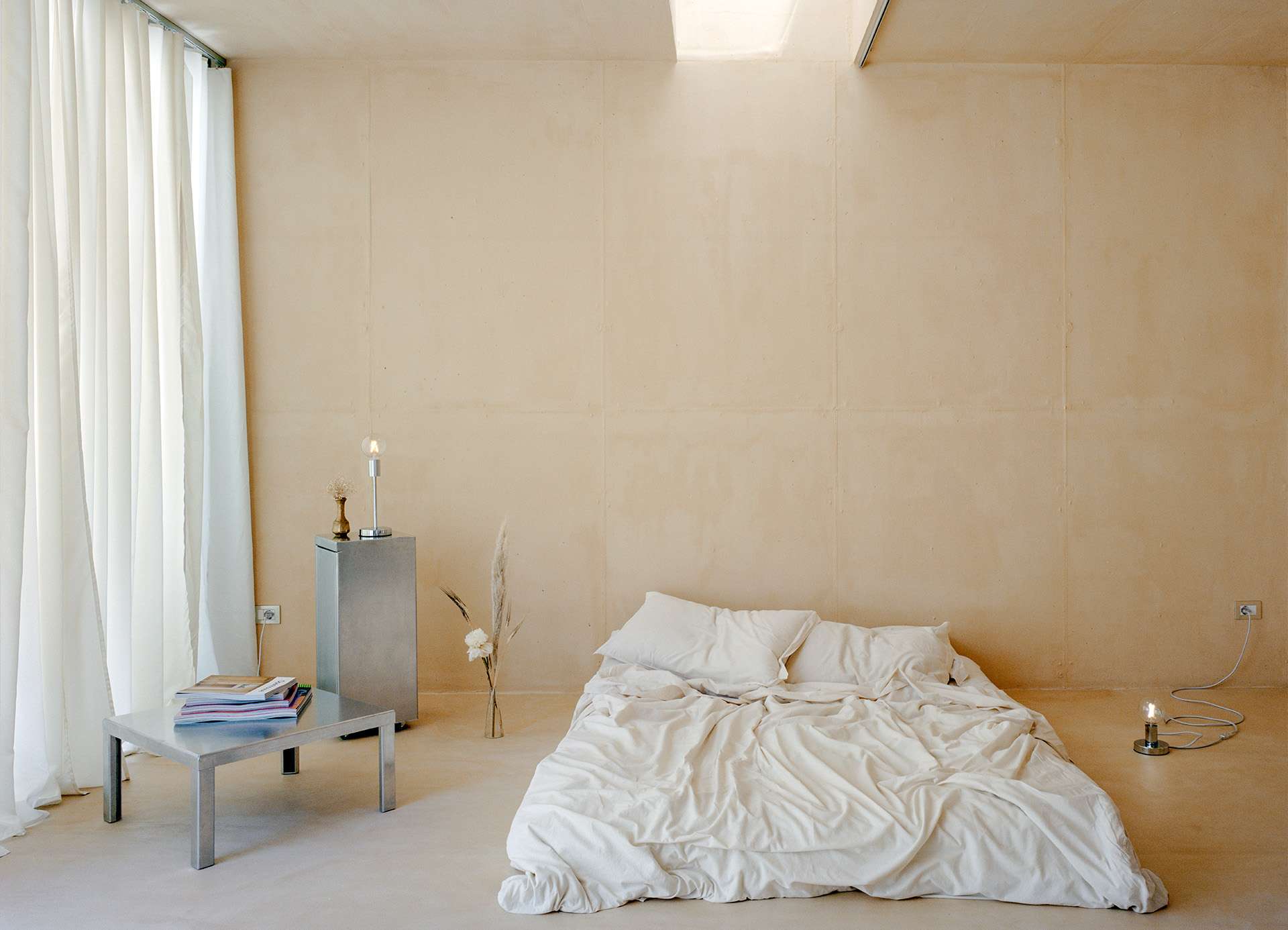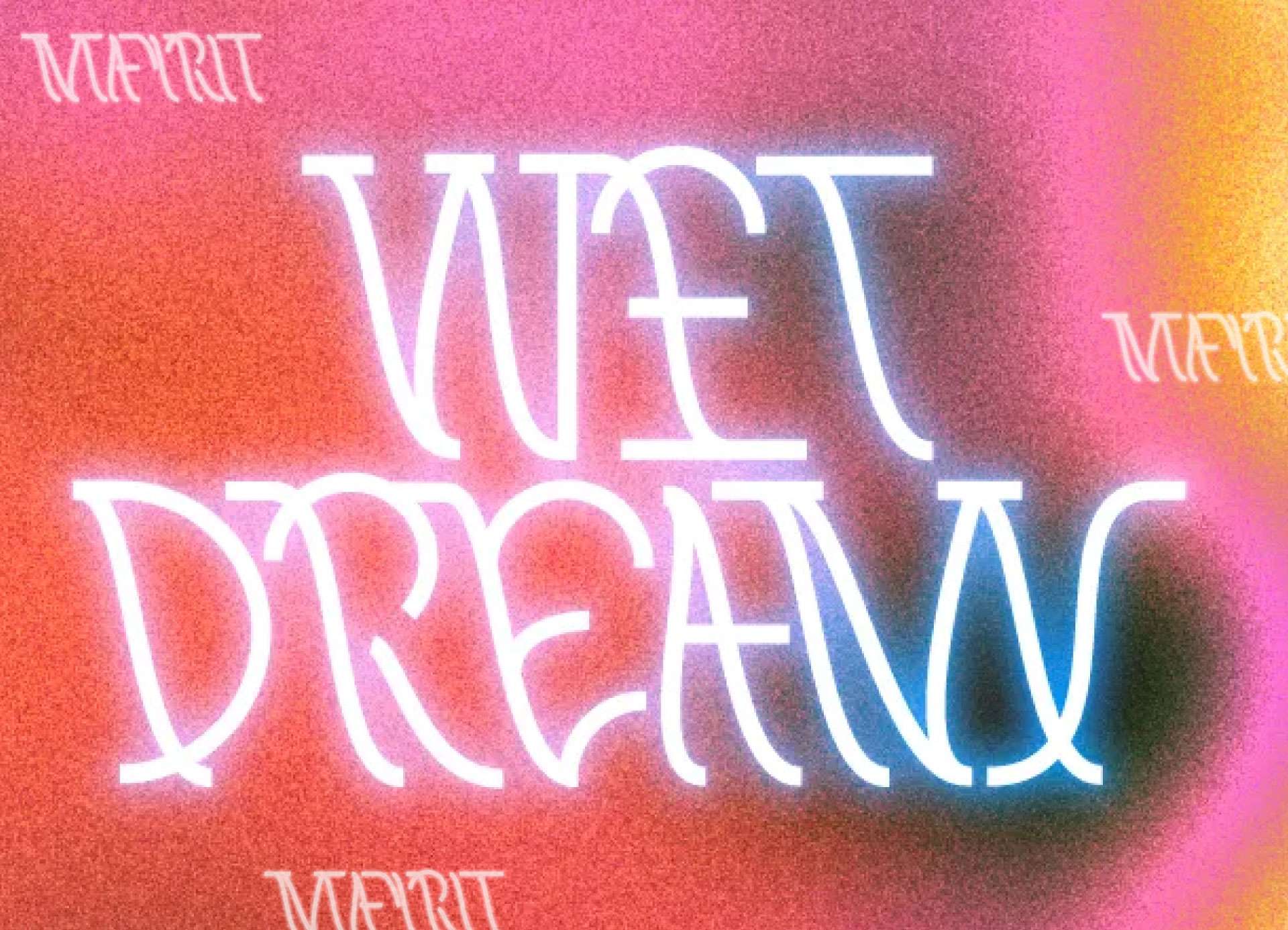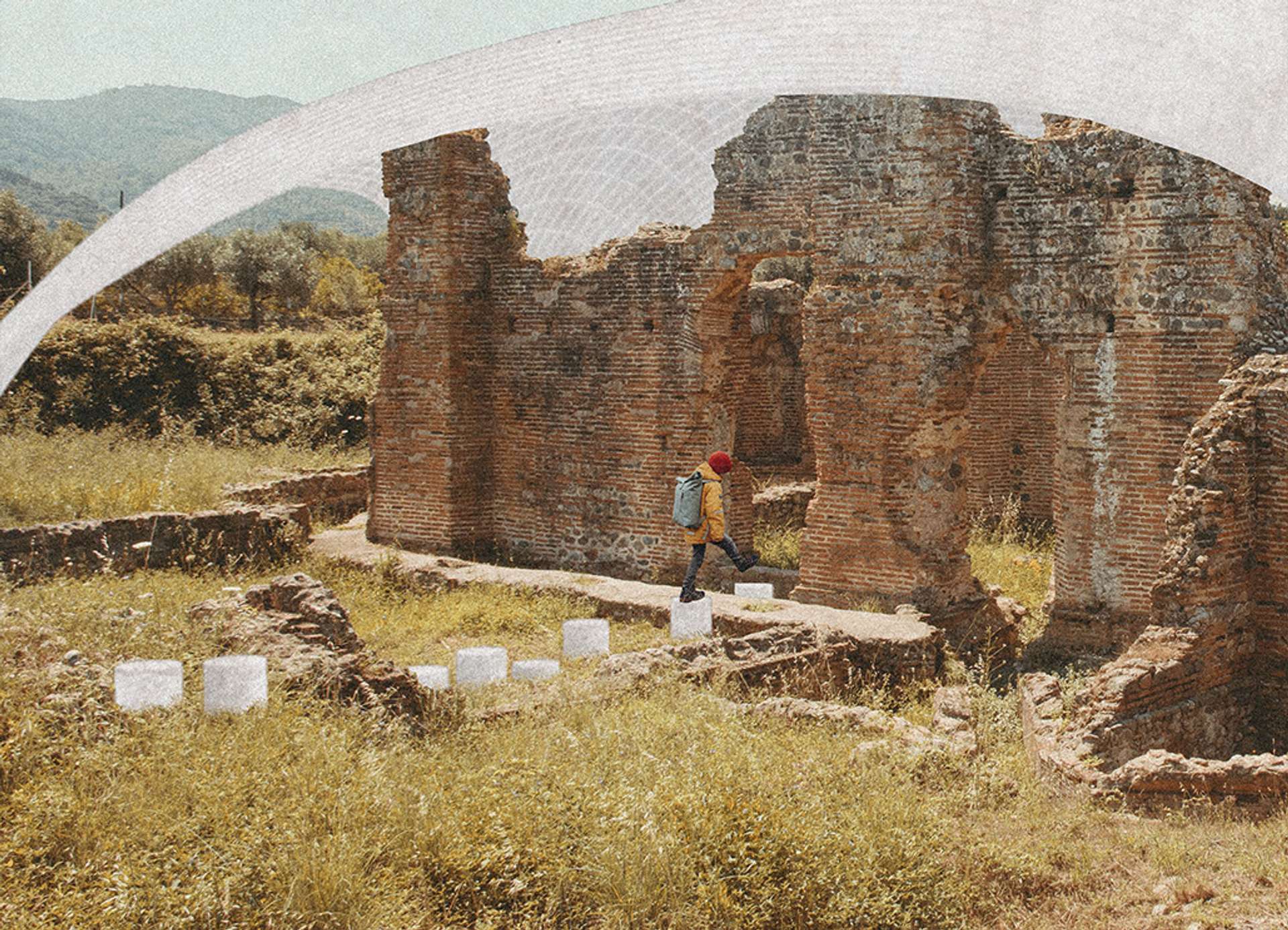The focal point of this project is the turn from the display of objects to the display of environments, a change that blurs the line between the body and the display, and questionably absorbs the subject into the object. The Selfie Museum epitomizes this cultural shift. In The Selfie Museum, subject and object aren't the sole dichotomies that are conflated: physical space combines with virtual image; the still moment merges with the temporal experience; two dimensional projections are overlaid onto three dimensional structures. As a result, architects become "experience designers," virtual reality is a mode of design practice, and an "instagrammable" moment is a project deliverable. This project simultaneously acknowledges these changes and critiques them. At the same time, it offers the combination of apparent oppositions as a potential new set of tools that can help rethink aspects of our profession. Using the Contested Selfie Museum as an entry point, tools of display such as the diorama and cyclorama as historical references, and disciplines such as media theory and tourist studies as comparisons, this project seeks to shed light on three transitioning topics in contemporary society- culture, tourism and the body.
Alongside a theoretical outline, this project is also composed out of a design intervention; a system I had constructed in order to suggest new relationships between object-subject, material-digital- visual, consumer-mannequin, and curator-viewer-artwork. This system is comprised of three parts: The device, a foldable cardboard model that one can carry around easily and reconfigure in any location. This museum in a box has eight rooms, partially obeying, partially resisting the selfie museum guidelines. In this device, inner joints are not hidden, but celebrated, and placed specifically in front of the cameras view. The surfaces height and width are measured to precisely fit the frame of the camera, or to deliberately misfit; displaying the physical world outside of the model at the top end of the photograph. The facilitator, an app which anyone can easily download to their phone. The interface of the app is straightforward; once a visitor clicks on the "start" button, there is a S second countdown, followed by a camera click. Once the image is processed, visitors are automatically directed to their instagram account, where they can crop the photo and upload it online. The app has three settings: Cloud, Green Screen and Transparent. While the Green Screen setting "cuts" the visitor's silhouette perfectly and places them inside of the set, the Cloud feature is messy; inserting both the visitor and random objects in their surroundings into the frame. The platform, the hashtag is the final part of the system and the platform that enables it. If every person who visits the museum uploads their photos to Instagram with the appropriate hashtag, all photos from the selfie museum, no matter who took them and on what cellphone, will appear under this tag. While the app inserts the person into the device, the instagram hashtag inserts the images into the world and allows for a different kind of selfie museum to circulate online.
The etymology of the word "display" means to unfold, scatter, reveal. This project seeks to unfold a few new understandings about Architecture using The Selfie Museum, or a few new Observations on The Selfie Museum using Architecture.
KOOZ What prompted the project?
NZ I have always been fascinated by spaces that articulate some form of contradiction. In my previous work I studied the privatisation of public architectural programs such as civic and cultural buildings, pointing at the commercial programs that were added and the tensions that this formed between public and private, open and closed, social and capitalistic. While searching for spaces of illusive discrepancies, I came across The Selfie Museum, which has very interesting frictions of its own. Selfie Museums are three dimensional spaces that are designed to be exported and distributed as two dimensional images. While studying these museums, I was incredibly intrigued by the merging of the two and three dimensional, time and the static moment, the 360° circular view that architecture enables and the chosen frame that photography enables. I began seeing these conflicts as key to the very basic concepts that form architecture - three dimensionality and the circular view allow for the geometry and the experience of the space, while linear time allows for the narrative to be formed inside of it. In my work, I suggest that if architects start thinking about the planning process in two dimensional ways, both new and questionable instances will occur. In that way, the Selfie Museum is a prism through which we can learn much about the current state of planning and design.
I was incredibly intrigued by the merging of the two and three dimensional, time and the static moment, the 360° circular view that architecture enables and the chosen frame that photography enables.
KOOZ What questions does the project raise and which does it address?
NZ It raises both the question of opportunity and that of a critique. In terms of opportunity, I analysed the spatiality of these museums in a very meticulous way, almost like you would analyse a Palladio Villa. These museums are far more sophisticated than one would assume and I had learned a lot by studying the camera orientations, geometries, color palettes, etc. The cameras, for instance, are strategically placed in front of room corners or columns, to signify that this is not a flat backdrop but an actual structure and thus a physical instead of a virtual experience. This designed tension between the flat and the three-dimensional, the physical and the digital, enables us to broaden our design language. One of the rooms in The Selfie Museum that I had studied was completely washed in a single color - doors, floors, exit signs, and pipelines, creating a complete redaction of the space and forming it into a flat, homogeneous canvas. The experience of being in that space challenges what we conceive of as architecture.
On the other hand, there is the critique, the question on the role of these museums in a cultural and social context. Here I mainly tried to understand why these spaces are even called “museums” and how they affect traditional museums and the ongoing demand for culture to become increasingly immersive. There is also the social media aspect: the influence of these platforms and especially Instagram on all aspects of our lives. It is bewildering to see how a simple technological construct reshapes everything, from our daily habits to actual architecture, urban programs in the city and the way we think about design. We need to be critical of these technologies and aware of their impact on architecture and beyond.
KOOZ How do you approach the notion of experience today?
NZ Today I would obviously answer this question differently then how I would answer it a year ago, which is when this thesis was written at MIT. In the current moment of global pandemic, experiences are almost irrelevant which is both relieving and revealing. The Experience Economy, a study conducted by Pine and Gilmore at Harvard in the 1990s had a significant effect on this project. In broad strokes; Pine and Gilmore argue that we prefer to consume experiences rather than the things themselves. When I go and have a coffee, for instance, I search for the right atmosphere, service, and mix of people, rather than the most wonderful cup of coffee. Since Instagram started taking such a major part in our lives, we are also in search for the right design or frame for our photographs. All of this created a culture where the simple things, such as the actual coffee, started mattering less than the experience of them, and most importantly the “shared” experience when I upload my day to Instagram. The Covid-19 pandemic put our lives to a halt and 2020 became the year of the non-experience; no tourist destinations, no events, no restaurants, no parties. Basically nothing to take a picture of. So people started experiencing (and documenting) more basic parts of life; the trees, their homes, the bread they made. I think this simple “back to basics” approach will have a major effect on how we live, consume, and experience the world around us.
The Experience Economy, a study conducted by Pine and Gilmore at Harvard in the 1990s had a significant effect on this project.
KOOZ From designing on pen and paper to inhabiting and experiencing the spaces we design, what is the power of tools as VR within the practice of design?
NZ I think they are great in terms of simulation and imagination, but I personally do not s them in the design process. Architects are trained to think and design through plans, sections, digital and physical models. For me, these basic techniques are sufficient in order to envision the space or artwork I am working on. VR experiences can be a powerful tool to simulate your work to a client or collaborators, but oftentimes it becomes a bit of a gimmick or a way for a real estate company to sell more apartments. I did try some VR experiences that belonged to the art and gaming worlds, and found them to be interesting. It can be a cool tool to create a feeling of compassion by having you inhabit a particular body - of a different human, species, or object. That feeling of being literally inside someone else's story can truly broaden one’s point of view.
KOOZ How has the space the architect designs changed to inhabit spaces as apps and so forth?
NZ As part of my research I studied how museums integrate digital platforms in their interface. I would say the most interesting example is the Cooper Hewitt in New York City, which went through a heavy physical-digital hybrid transformation a few years ago. The museum is using a platform where each visitor receives a “digital pen” alongside their ticket. This interactive pen allows one to collect and digitally save objects from around the galleries. This collection is automatically transferred to the user’s phone, where they can revisit the objects that were saved and read more about them. They also included what they refer to as the ‘Immersion Room’ where visitors can project the museum’s collection of wallpapers at full-scale, floor-to-ceiling on the surrounding walls. This is definitely a side effect of the Selfie Museum culture and The Cooper Hewitt isn’t the only art or design museum that is implementing it to attract new visitors; The Van Gogh Museum in Amsterdam, for instance, has a specific selfie spot in its entrance. In addition, it is opening an experiential exhibition in London where Van Gogh's artworks will be projected inside a huge warehouse, from floor to ceiling, enabling an immersive view of the work. There was another such exhibition in Paris two years ago with work by Gustav Klimt which was an immense success.
The physical is digital, the virtual is real, the artwork is a projection, and a photo from The Selfie Museum is sometimes more significant than the moment itself.
KOOZ What are the implications of this?
NZ It can be seen as a certain degradation of the work, but on the other hand it appeals to a wider audience and more people visit the museum. It’s a slippery slope, where you are either perceived as a populist or as an elitist, and the fine line between the two isn't easy to find. In my view, the digital-physical hybrid has the potential to alienate us from our surroundings and ultimately from ourselves. If we go for it, we need to be critical and do it with care.
KOOZ At a time and in a society of incessant 'sharing' and which is continuously connected to what extent can we think of an experience which is solely tied to the physical realm?
NZ There is no distinction anymore; the physical is digital, the virtual is real, the artwork is a projection, and a photo from The Selfie Museum is sometimes more significant than the moment itself. We need to accept the hybrid, the contradiction, the gray zones.
KOOZ What does it mean to display or be on display today?
NZ In my work I show the lineage from classic display systems; whether they be museum vitrines, cinema screens, or shop windows, to immersive displays, where there is no longer a separation between the subject (the viewer) and the object (the thing which is on display). Tony Bennet wrote in his book “The Birth of the Museum” on how museums began opening up to the public in the end of the eighteenth century, and not only the objects were on display but also the visitors, watching and surveying each other. He argues that this performative aspect influenced the way museums developed in terms of their architecture - creating mezzanine floors, open spaces, and using transparent and light materials such as glass and steel to allow for everything to be seen, and eventually ‘on display’. I think that we are still very much in this world but nowadays there are, of course, also the virtual platforms that even emphasize this further. There are moments when I zoom out and look at how social media technologies are being used and I feel that this is probably the most interesting and eye-opening exhibition in the city right now. It is sad, just as much as it is radical, different and relevant.
KOOZ What is for you the architect's most important tool?
NZ I am a strong advocate for physical models. Although my research at MIT was mainly theoretical and resulted in researching and writing, I had also created a physical model, a scaled selfie museum where all of the rooms were rendered and applied flat, like wallpapers, on the cardboard panels. The model had slots where one could insert their phones and using an app which I programmed, take a simultaneous image of the interior of the model and the exterior, physical realm. The app cropped the silhouette of the body and placed it on the models backdrop, creating in one image all of the aforementioned contradictions - flat and three dimensional, fantasy and real, digital and physical, simulation and human. Although I could easily make these images in photoshop, I needed to make my own physical machine in order to make a genuine statement; something between an architectural model, a camera, and a museum in a box. The model stitched together the entire project - a physical platform designed for virtual simulation. It produced a fake selfie museum with images one could publish online. Yet, by merging the functions of a camera with those of the modeled space, it became an architectural tool rather than an architectural oddity. To me, the physical always takes precedence over the virtual.
Bio
Nitzan Zilberman is an architect from Tel Aviv, currently based in New York City, where she is working with the designer Neri Oxman. Apart from working in architecture practices such as Studio PEZ and HQ Architects, she has helped to curate, design and produce for various international exhibitions including the Brazilian Pavilion in the 2018 Venice Architecture Biennale, “Countryside: The Future” by Rem Koolhaas/AMO at the Guggenheim Museum and “Neri Oxman: Material Ecology” at the Museum of Modern Art. She received her Masters of Science in Architecture Studies from The Massachusetts Institute of Technology and her Bachelors of Architecture from the Bezalel Academy of Art and Design.





